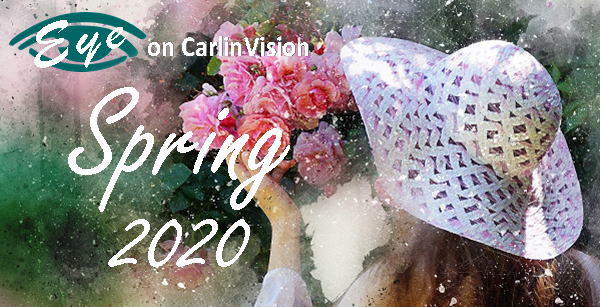LASIK Myths and Facts
 Myth: LASIK is painful.
Myth: LASIK is painful.
Fact: During the 15 minute procedure your eyes are numbed with eye drops (no shots) so there is no pain. The only sensation is some brief pressure.
Myth: You can go blind from LASIK.
Fact: There have been more than 19 million procedures in the United States and no reported cases of blindness!
Myth: LASIK is so new that long term side effects are unknown.
Fact: Laser vision correction has been performed for more than 30 years! Side effects are typically mild, occur shortly after surgery and generally resolve quickly. Significant complications are rare.
Myth: LASIK doesn’t last and usually has to be repeated.
Fact: Our late enhancement rate is approximately 1% so repeat Lasik is rare.
Myth: Everyone is a candidate for LASIK.
Fact: Some patients would be better candidates for a different refractive procedure and some should not have anything done. An evaluation by a physician versed in all refractive procedures can help you decide what is best for you.
Myth: All LASIK is the same so cheaper is better.
Fact: LASIK centers that advertise below average costs may be cutting out patient screening and essential pre and post procedural care. Also, there is wide variability in technology so you want to be sure you are having the latest, most up-to-date blade-free custom designed procedure performed by a skilled experienced surgeon who will be with you through the entire process.
Macular Degeneration: What You Need to Know
![]() As the leading cause of severe, permanent vision loss in people over 60, Macular Degeneration means a deterioration of the central cells of the retina, those responsible for acute vision. While not causing complete blindness, it can cause severe visual loss.
As the leading cause of severe, permanent vision loss in people over 60, Macular Degeneration means a deterioration of the central cells of the retina, those responsible for acute vision. While not causing complete blindness, it can cause severe visual loss.
There are two types: Dry, the most common (90%), manifest by yellow deposits (drusen) in the macula. While a few small drusen may be normal, large numerous deposits may dim or distort the vision and as the light-sensitive cells die, there may be blind spots and even a loss of central vision. Wet (10%) occurs when blood vessels grow underneath the macula. These fragile vessels may leak, causing straight lines to look wavy and may lead to blind spots and loss of central vision. As the bleeding scars, there is a permanent loss of central vision.
Risk factors include family history, smoking, high blood pressure, high cholesterol, obesity, a diet heavy in saturated fats, being light skinned, female and having light colored eyes.
Symptoms include worsening or blurry vision, difficulty reading fine print, dark areas in the central vision, straight lines appearing wavy or a change in color perception. Early diagnosis is key! Though there is no cure, treatment may slow progression and keep you from losing vision so early diagnosis is very important. Treatments include: anti-angiogenesis drugs which block the creation of and the leaking from blood vessels, laser therapy, photodynamic laser therapy and low visual aids. Supplements of vitamins C and E, lutein, Zeaxanthin, zinc and copper and a balanced diet with green leafy vegetables may help. Of course, not smoking and controlling blood pressure is vital.
Concerned or have further questions? Dr. Modi, our retinal specialist, is here to help.
Interesting Eye Color Facts
 1. All babies are born with blue eyes.
1. All babies are born with blue eyes.
Newborns often appear to have blue eyes. Within 3-12 months, cells begin to produce melanin in the iris so eye color may darken.
2. Babies are born with their eyes fully-grown.
Newborn babies’ eyes are approximately two-thirds of their adult size. Eyes grow after birth, usually during two phases: the first few years of life and puberty.
3. Brown-eyed parents can’t have a blue-eyed child.
It is impossible to predict a child’s eye color from the parents’ eye colors. As many as 16 different genes may be responsible for eye color, explaining why two parents with the same eye color can produce a child with an entirely different eye color.
All Pink Eyes Are Not “Pink Eye”
 There are many causes of a pink eye.
There are many causes of a pink eye.
Dilated blood vessels on the surface of the eye cause an eye to appear pink or red.
An infection can be bacterial, viral, fungal, or parasitic, and usually associated with discharge.
An allergic reaction is often very itchy and can be due to any foreign protein. External such as dust, grasses, molds, fabrics, foods, etc. or internal such as in those with systemic diseases.
Toxicity from eye drops, make up, etc. generally burns.
A dry eye is red and gritty.
A foreign body in the eye or a scratch will be aggravated by blinking.
Glaucoma or inflammation inside the eye will be painful.
A subconjunctival hemorrhage (broken blood vessel) will appear as a painless bright red spot.
The Causes of a Droopy Eyelid
![]() There are 3 main causes of droopy eyelids which make you look tired, sad, or older.
There are 3 main causes of droopy eyelids which make you look tired, sad, or older.
Dermatochalasis: refers to excess tissue hanging over the lid margin, repaired by removing excess skin and fat from the eyelid.
Ptosis: refers to the lid itself being low. While it may be accompanied by dermatochalasis it can occur alone and be congenital, due to age or disease. This is rectified by actually tightening the muscle to lift the lid.
Brow ptosis: refers to the descended eyebrow which causes secondary dermatochalasis. This is repaired by elevating the eyebrow itself, pulling the tissue upward.
Marijuana and Glaucoma
 As marijuana has been legalized in more U.S. states, we are frequently asked if it could be a viable treatment for glaucoma. Research in the 1970s and 1980s did show a decrease in intraocular pressure for 3 or 4 hours after smoking cannabis or ingesting THC as a pill or injection. But to treat glaucoma and save vision, eye pressure must be controlled 24 hours a day. To reduce and maintain intraocular pressure by 3 to 5mm Hg you would have to ingest about 18 to 20 mg of THC 6-8 times every day. The negative effects on mood, mental clarity and (if smoked) lung health would be significant. In addition, the cost of using marijuana this much would make it cost-prohibitive.
As marijuana has been legalized in more U.S. states, we are frequently asked if it could be a viable treatment for glaucoma. Research in the 1970s and 1980s did show a decrease in intraocular pressure for 3 or 4 hours after smoking cannabis or ingesting THC as a pill or injection. But to treat glaucoma and save vision, eye pressure must be controlled 24 hours a day. To reduce and maintain intraocular pressure by 3 to 5mm Hg you would have to ingest about 18 to 20 mg of THC 6-8 times every day. The negative effects on mood, mental clarity and (if smoked) lung health would be significant. In addition, the cost of using marijuana this much would make it cost-prohibitive.
Also, marijuana not only lowers eye pressure, it also lowers blood pressure. This may effectively lower the blood flow to the optic nerve canceling out the benefit of lowered intraocular pressure.
Finally, there is no accepted current research showing CBD, a derivative of cannabis without mood-altering effects, to be an effective treatment for glaucoma.
.
